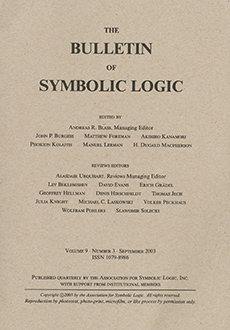Abstract
In historical discussions of twentieth-century logic, it is typically assumed that model theory emerged within the tradition that adopted first-order logic as the standard framework. Work within the type-theoretic tradition, in the style of Principia Mathematica, tends to be downplayed or ignored in this connection. Indeed, the shift from type theory to first-order logic is sometimes seen as involving a radical break that first made possible the rise of modern model theory. While comparing several early attempts to develop the semantics of axiomatic theories in the 1930s, by two proponents of the type-theoretic tradition (Carnap and Tarski) and two proponents of the first-order tradition (Gödel and Hilbert), we argue that, instead, the move from type theory to first-order logic is better understood as a gradual transformation, and further, that the contributions to semantics made in the type-theoretic tradition should be seen as central to the evolution of model theory.
Citation
Erich H. Reck. Georg Schiemer. "Logic in the 1930s: type theory and model theory." Bull. Symbolic Logic 19 (4) 433 - 472, December 2013. https://doi.org/10.2178/bsl.1904010
Information





